- EU may issue bonds to finance defense, energy
- NASDAQ Composite enters bear market
- Dollar stumbles
Key Events
On Tuesday, US futures on the Dow Jones, S&P 500, NASDAQ, and Russell 2000 pared declines as European stocks rallied on reports that the European Union may jointly issue bonds to fund energy and defense spending as a result of Russia's invasion of Ukraine. The EU is expected to unveil the plan after the bloc's summit in Versailles, France on Mar. 10 and Mar. 11.
Treasuries tumbled and gold gained.
Global Financial Affairs
US contracts were slightly higher this morning, but volatile after all four major futures indices trimmed losses seen during the Asian session.
European equities on the STOXX 600 also reversed an initial selloff after news of the European bond initiative broke.
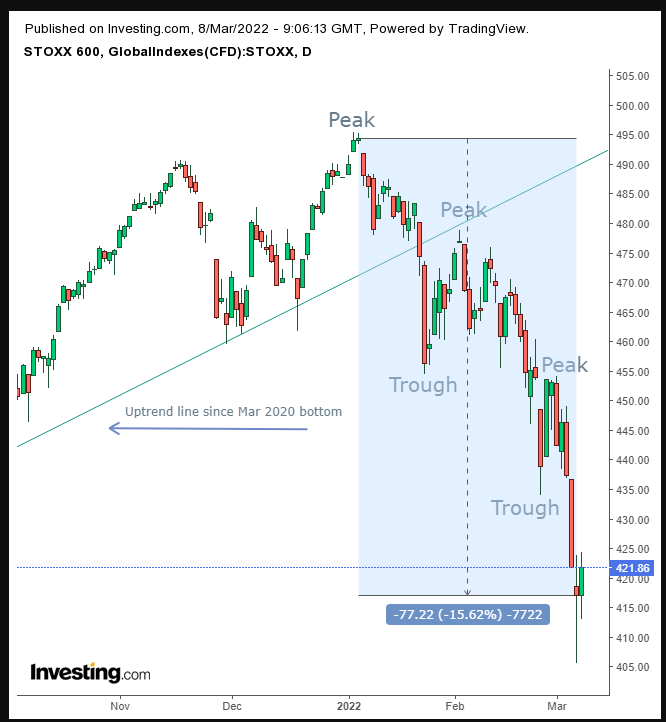
The pan-European benchmark climbed for the first time in four sessions, after posting losses of 15.62% between the Jan. 5 record and Monday's close. If the index's drop extends by another 4.38%, it will trigger a bear market. The gauge has already established a short-term peak-trough downtrend.
Earlier Tuesday, Asian benchmarks extended declines as commodities continued to surge and the US considers banning Russian oil imports.
China's Shanghai Composite was the regional underperformer; plunged 2.35%.
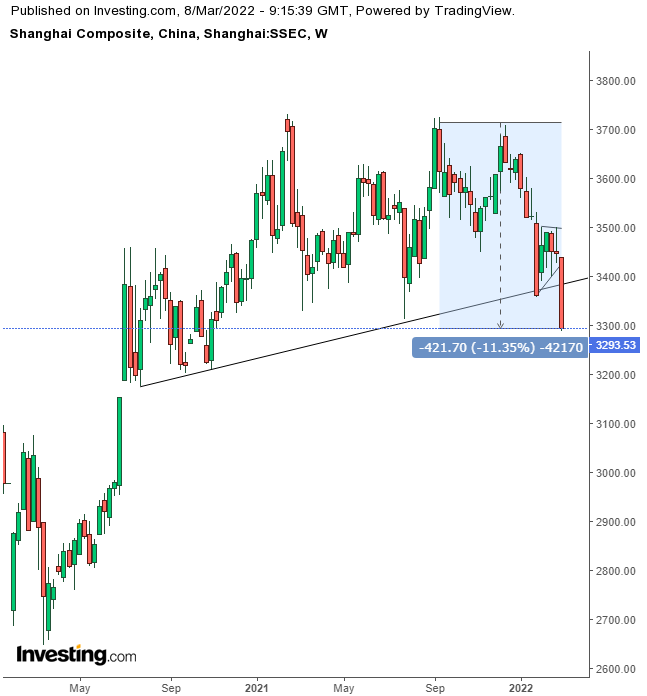
The Chinese index extended the downside breakout of a continuation pattern, which helped bears complete a massive top since mid-2020. The Shanghai Composite entered correction mode, falling 11.35% from its Sept. 13 record.
Australia's ASX 200 'outperformed,' shedding just 0.83%. The country's significant store of natural resources boosted its mining sector. However, regional energy shares plunged 3.6% on Tuesday, on profit-taking, their worst performance in over a month, after rallying 5.3% on Monday.
During Monday's Wall Street session, US stocks suffered their worst daily rout in 17 months, pressured by worries around the Russia-Ukraine conflict. Among the SPX's 11 sectors, Consumer Discretionary shares plunged 4.9%, followed by Technology's 3.7% selloff, Marterials dropped 3.5% and Communications Services stocks declined by 3.3%. Energy and Utilities were the only sectors in the green yesterday, advancing 1.5% and 1.3%, respectively.
The S&P 500 index dropped nearly 3%, its most significant loss since October 2020.
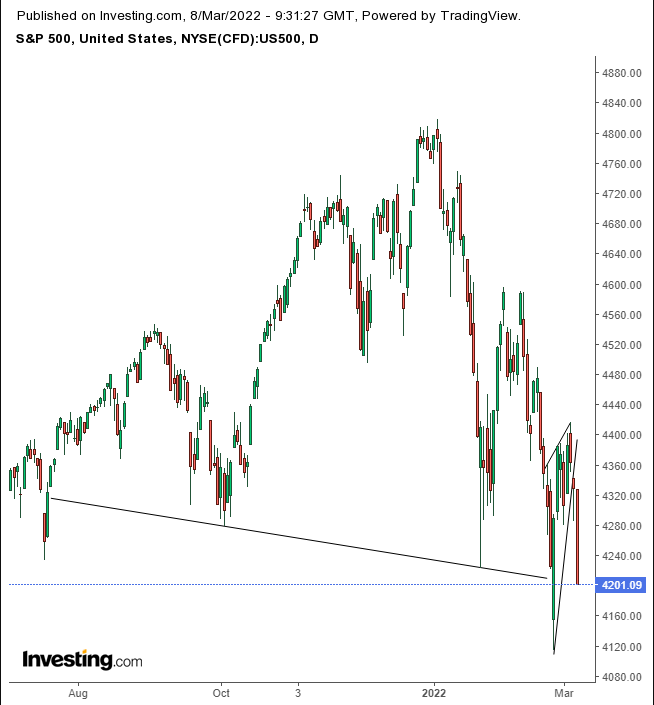
After completing a bearish flag, the broad benchmark closed right on the neckline of an H&S bottom going back to July.
The NASDAQ 100 fell 3.75%, bringing the tech-heavy index's total decline since its Nov. 19 record to 19.6%, almost at bear market levels.
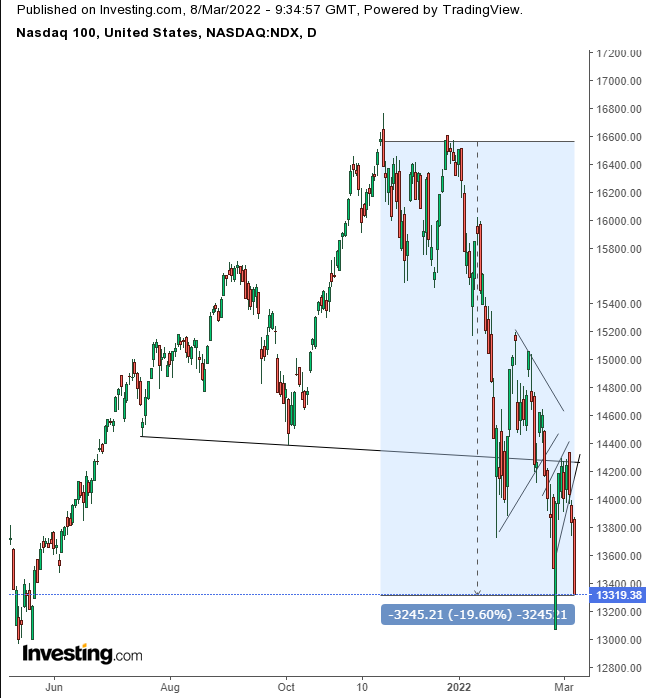
The index extended the downside penetration of back-to-back continuation patterns, aiding bears in completing an H&S top.
The NASDAQ Composite is officially in a bear market, having fallen 20.09% since its Nov. 19, 2021 record, replicating the same pattern as the NDX.
The selloff in 10-year Treasuries pushed yields up for the second day, where they found support by the symmetrical triangle.
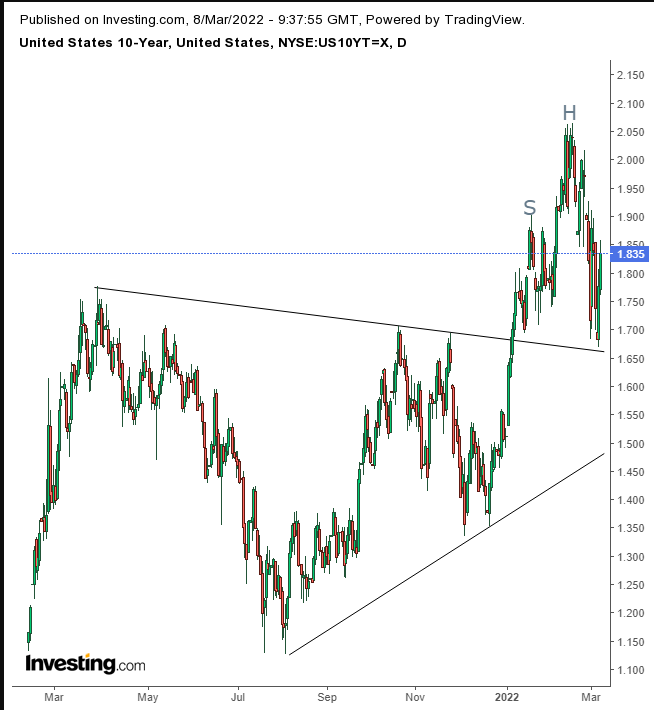
Still, there is a chance that the current movement is part of a small H&S top, though we'd bet on the larger symmetrical triangle, suggesting yields are heading higher as the Treasury selloff continues.
The dollar retreated after climbing for five out of six days.

The greenback may be performing a return move to an H&S continuation pattern.
Gold extended a rally to its fourth straight day, crossing the $2,000 level again, realizing our target. The yellow metal is currently trading 5% below its Aug. 6, 2020 record.
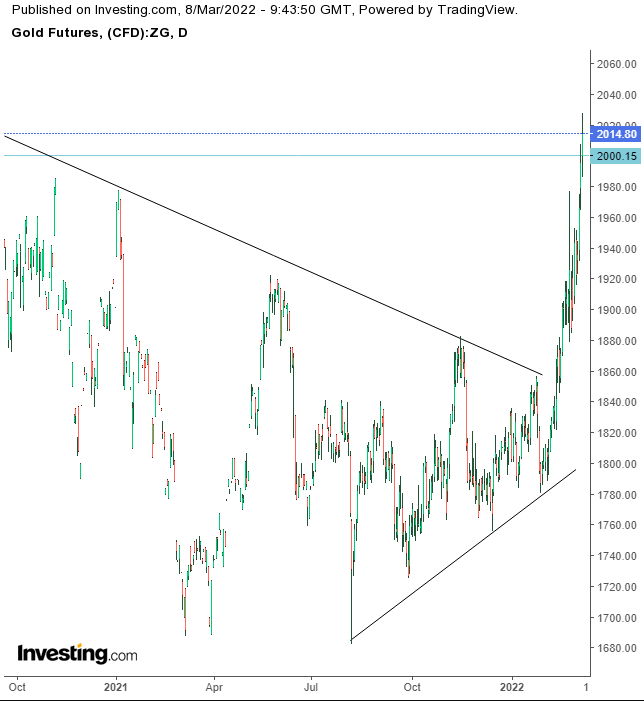
Having risen 13% since the Jan. 29 low, it would probably be a good idea to wait for a take-profit dip on the precious metal, to retest the sizeable symmetrical triangle whose upside breakout triggered the current rally.
Bitcoin rose for the second time over the last seven sessions, during which the digital coin token more than 12% of value, even as other haven assets surged.
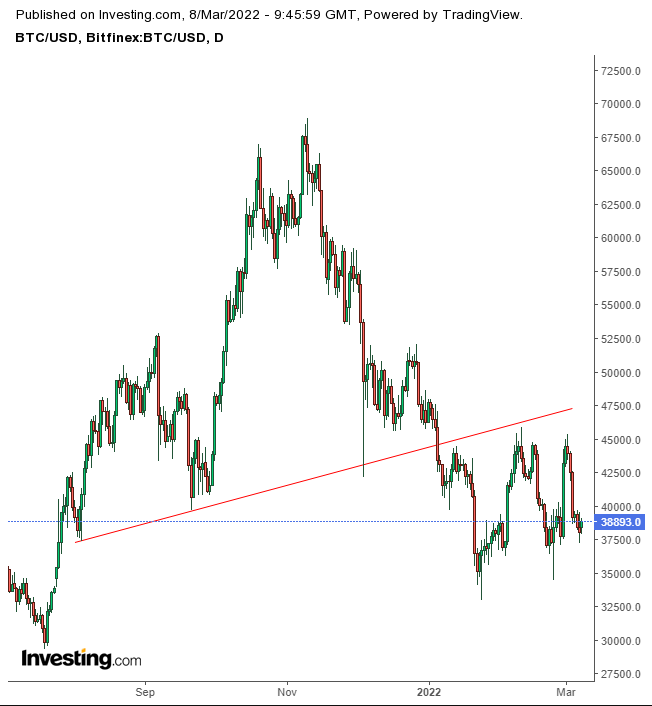
We're still waiting for the cryptocurrency to test the $30K level, having completed a large H&S top.
Oil extended the rally to its sixth day out of seven, to over $120 a barrel, for the first time since Aug. 1, 2008.
Upcoming Events
- Apple (NASDAQ:AAPL) hosts its first product event of 2022 today.
- The EIA reports crude oil inventories report on Wednesday
- On Wednesday, US JOLTS job openings are published.
Market Moves
Stocks
- The STOXX 600 rose 0.5%
- Futures on the S&P 500 rose 0.4%
- Futures on the NASDAQ 100 were little changed
- Futures on the Dow Jones Industrial Average rose 0.1%
- The MSCI Asia Pacific Index fell 1.6%
- The MSCI Emerging Markets Index fell 1.2%
Currencies
- The Dollar Index fell 0.3%
- The euro rose 0.6% to $1.0919
- The Japanese yen rose 0.3% to 115.65 per dollar
- The offshore yuan fell 0.07% to 6.3191 per dollar
- The British pound rose 0.17% to $1.3124
Bonds
- The yield on 10-year Treasuries advanced seven basis points to 1.84%
- Germany's 10-year yield rose to 0.089%
- Britain's 10-year yield increased six basis points to 1.39%
Commodities
- WTI crude advanced 2.9% to $122.91 a barrel
- Brent crude rose 3.5% to $127.60 a barrel
- Spot gold rose 0.5% to $2,009.20 an ounce
